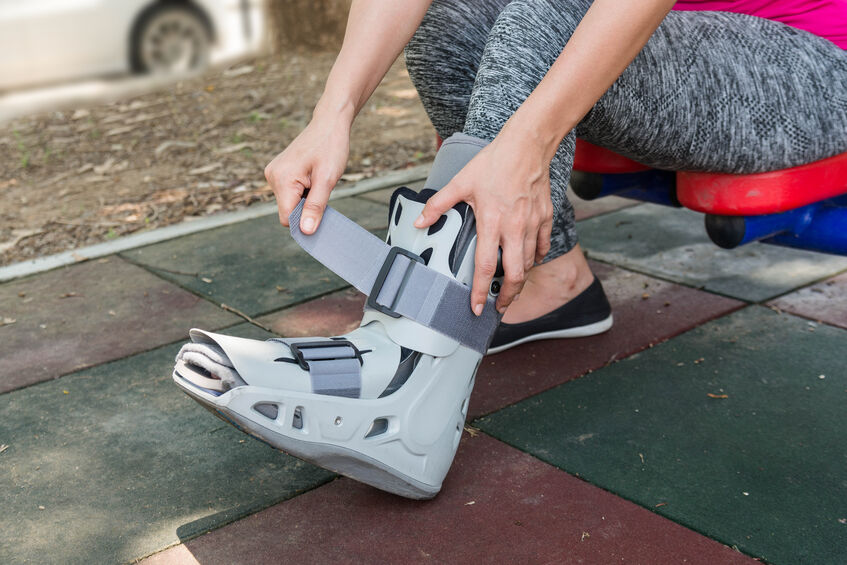
Walking boots have been a staple in orthopedic recovery for years, offering significant medical benefits for individuals recovering from various injuries. Whether you’re dealing with a sprained ankle, a broken foot, or recovering from surgery, walking boots provide stability and protection, helping you stay mobile while you heal.
Here’s a look at everything you need to know about walking boots!
What Is the Purpose of a Walking Boot?
A walking boot is designed to protect and stabilize the foot and ankle following injuries such as fractures, severe sprains, torn tendons, shin splints, or surgery. By securing the foot in place, the boot allows you to put weight on the injured area safely, promoting healing while maintaining mobility. Walking boots come in different sizes, often extending over the ankle or up to the knee, and are secured with adjustable straps to ensure a snug fit.
The main purpose of a walking boot is to allow healing without the risk of further injury. It provides support so you can remain active to a certain extent, even while dealing with mobility restrictions.
How to Properly Wear a Walking Boot
To ensure the walking boot provides maximum support, you must wear it correctly. Here’s how to put it on:
- Start Seated: Sit in a comfortable position to avoid putting unnecessary pressure on your foot during the process.
- Position Your Heel: Slide your foot into the boot, ensuring your heel is as far back as possible.
- Secure the Boot: Wrap the boot around your foot and leg, then fasten the straps, starting at the toe and working your way up. Adjust the straps for a snug but not overly tight fit.
- Monitor Your Foot: Check your foot periodically for any signs of swelling, redness, or discomfort that could indicate overtightening. Remove the boot occasionally to let your foot breathe.
Proper fit and use are essential to avoiding complications and ensuring the boot provides the intended support.
Do You Need Crutches or Other Assistive Devices?
While a walking boot reduces weight on the injured foot, it may not be enough to fully support your mobility without additional assistance. Depending on your injury, your doctor may recommend crutches, a walker, a cane, or even a wheelchair for extended periods when standing or walking. These tools can help distribute weight more evenly and prevent reinjury.
Always consult with your healthcare provider to determine the best options for your recovery. They’ll provide personalized advice to ensure you heal safely and comfortably.
Tips for Navigating with a Walking Boot
- Practice Caution: Walking with a boot can initially feel awkward, and slippery or uneven surfaces like wet floors, grass, or mud can increase your risk of falls.
- Take It Slow: Adjusting to the boot takes time, so move carefully and avoid overexerting yourself.
- Protect the Boot: Consider using a non-slip sole cover or a weather-resistant protector if you’ll be walking in wet or snowy conditions.
Find the Right Walking Boot for Your Recovery
Wearing a walking boot is an adjustment, but the right equipment can make your recovery more manageable. At BEK Medical, we offer a range of orthotic walking boots designed for maximum comfort and support, helping you heal while staying mobile.
Visit us online to browse our selection of medical products, or stop by in-store to learn more about the walking boots we have in stock. Your path to recovery starts here!
